Monkeys & Medicine: How 17th Century Pets Helped Prevent 1.5 Million Childhood Deaths
During the first half of the 20th century, the first signs of a fever could strike a deep sense of worry and dread into the hearts of many parents.
The 1920s saw the beginning of an epidemic that spread across Europe and the Americas and, at its peak, paralysed or killed over half a million people worldwide every year.
My grandmother was one of the lucky children who survived Polio relatively unscathed once she re-learnt how to walk.
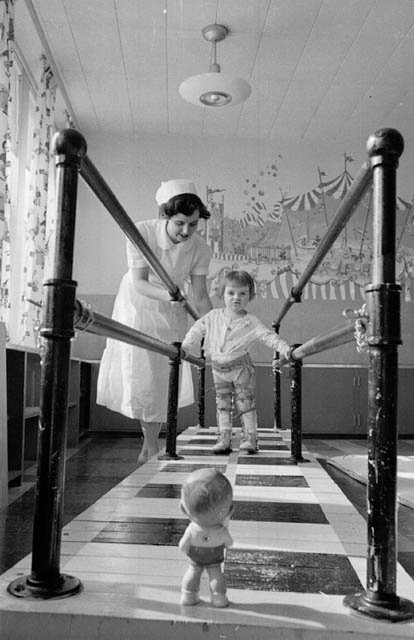
Mar. 1953.
Photographer: Lund, Chris, 1923-1983.
Mrs. E. Marr, physiotherapist, with Gifford, 2 1/2 yrs old, at the walking bars in the polio clinic at the Sudbury General Hospital | Public Domain Image
Rehabilitation techniques in Barbados were minimal yet creative in the 1930s, and thankfully they worked. My grandmother would frequently recount how, as a child, she rode a bicycle with heavy bricks strapped to its pedals to regain the strength in her legs.
Once known as Infantile Paralysis, Polio (Poliomyelitis) has existed for as long as we’ve been able to recall. Evidence of Polio spots our cultural narratives, from Egyptian carvings depicting its crippling effects to the frail limp of Tiny Tim in the Charles Dickens' classic A Christmas Carol.
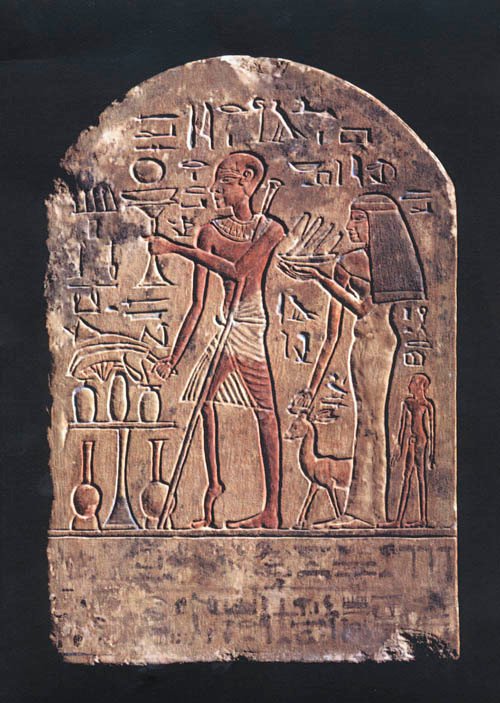
An Egyptian stele thought to represent a polio victim, 18th Dynasty (1403–1365 BC) | Public Domain Image
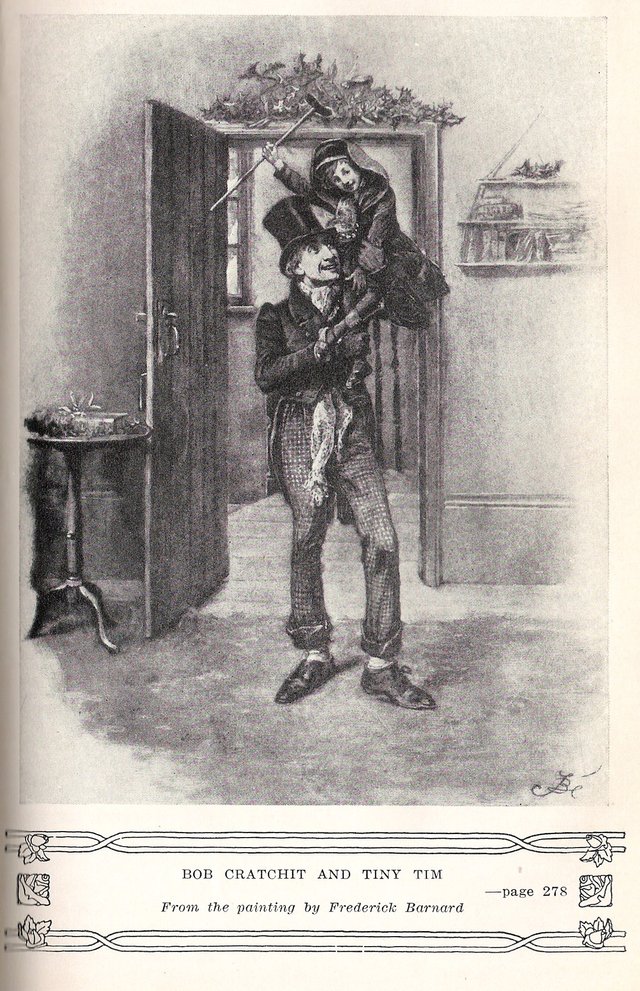
Junior Classics, P.F. Collier & Son Corporation New York, Copyright 1918 | source
Although Polio is extremely contagious, in the majority of cases it is very mild and has no last effecting.
In 1-2% of cases however, the virus invades the nervous system, creating the devastating effects we associate with the disease.
Muscle paralysis typically affects the limbs first, but in severe cases breathing can also become labored or stop as the virus invades deeper into the spinal column damaging or destroying cells.
The psychological effects of treatment in the early 20th Century were not to be discounted either.
Hundreds of thousands young children were separated from their worried parents and quarantined as they lost control of their bodies. Rehabilitation took years for many people and in the most extreme cases, victims would go on to spend decades literally encased in an “Iron Lung” that ‘breathed’ for them.
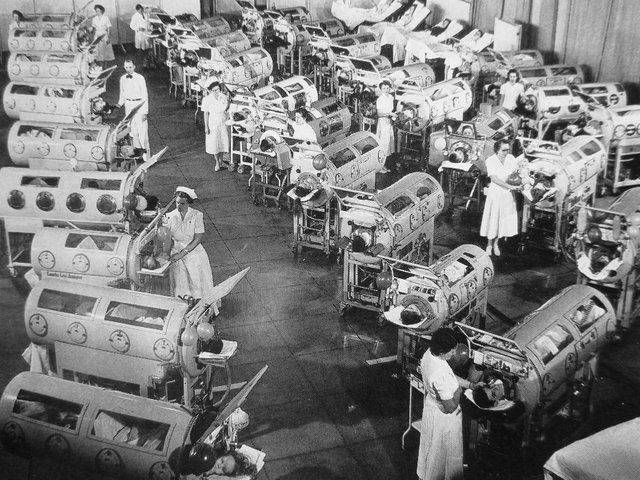
Photo of polio patients in iron lungs during 1953 epidemic | public domain image
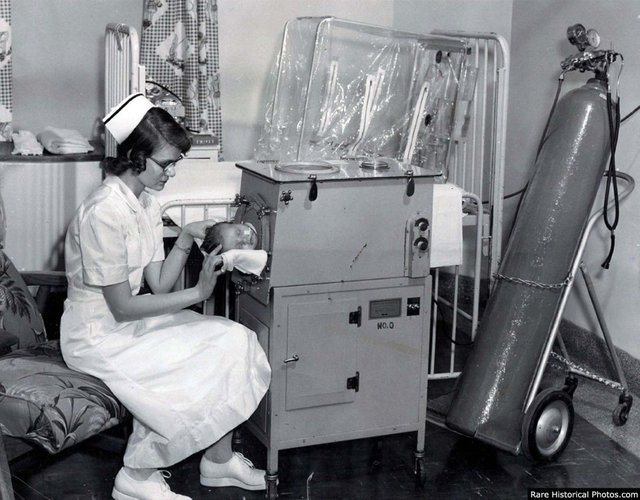
Infant in an Iron Lung c. 1950s | source
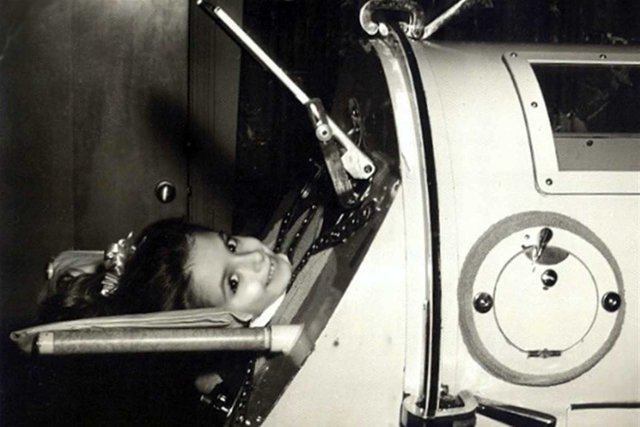
Martha Ann Lillard was just 5 in 1953 when she became paralyzed by polio and had to use an iron lung respirator.
She spent six decades in the 800-pound device. | source
The Monkeys
The British first settled Barbados in 1625. This small island, only 21 miles long and 14 across, would prove to be of more historical significance than its diminutive size would lead one to believe.
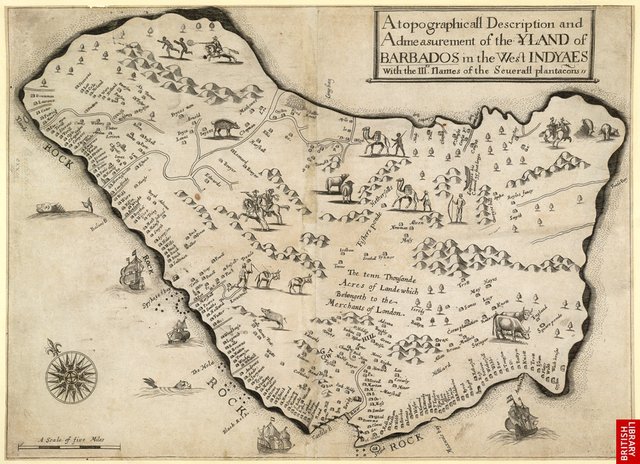
1657.
The earliest known map exclusively of the island of Barbados appearing in A True and Exact History of the Island of Barbados written by Richard Ligon
Among the earliest settlers of the island, both voluntary and involuntary, were the ancestors of the modern Barbados Green Monkey. Originally from West Africa, these olive hued monkeys were brought to Barbados as pets over 350 years ago.

2016
A Barbados Green Monkey | Photo by @jamtaylor
But nature will always have it's way, and these curious animals did not remain as pets for long.
Quickly escaping into the forests of the island they made themselves at home. So at home in fact, that from as early as 1684 a bounty was temporarily imposed on their head. As it happens, Green Monkeys are a terrible pest to agriculture causing millions of dollars of damage to crops. On this small island where space is limited, people and monkeys have been in competition over our fruit and vegetables ever since.
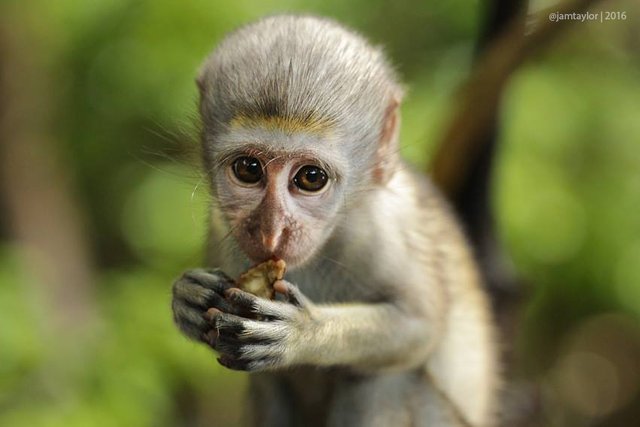
2016
Juvenile Green Monkey | Photo by @jamtaylor
Over 75 generations have passed since these monkeys first arrived on our shores and, as a result of environmental differences and evolution, the Barbadian monkeys today have different characteristics than their cousins in West Africa.
The most notable of which being their relative lack of disease. The isolation of island living means that Barbadian Green Monkeys do not carry the AIDS virus, which afflicts many of their species in Africa, for example.
This is how 17th Century Escaped Pets helped prevent an estimated 1.5 million childhood deaths.
Since 1988, polio cases have decreased by over 99% with only 74 cases reported in 2015. More than 15 million people are able to walk today, who would otherwise have been paralysed.
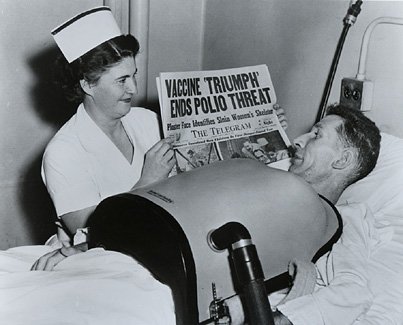
Courtesy of Polio Canada/Ontario March of Dimes
This reduction is the result of a global effort to eradicate the disease through widespread vaccination.
And where did these vaccines come from?
Mostly, a disease free population of Green Monkeys on a small tropical island.
While farmers were out shooting these 'pests' to protect their crops and collect their $5 bounty, researchers were discovering that their kidney tissue culture was incredibly useful to manufacture polio vaccines. A pair of kidneys from one green monkey can produce up to a million doses.

2016 Barbados Green Monkey | Photo by @jamtaylor
Founded in 1982, the Barbados Primate Research Centre was opened by Canadian parasitologist Jean Baulu and became a cornerstone in the fight against polio, annually capturing and selling up to 1,000 of these primates to facilities abroad, mostly in Western Europe.
Eighty percent of the world's polio vaccine came from these Barbadian Green Monkeys.
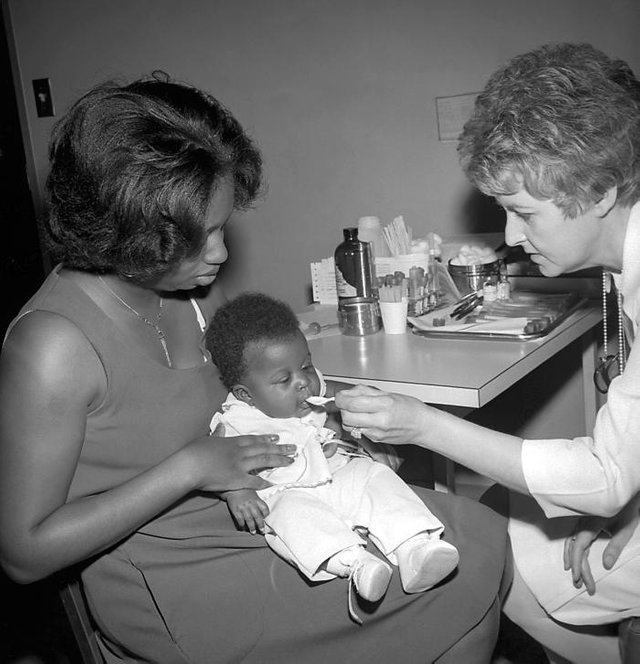
Administration of the oral polio vaccine, 1977.
CDC Public Health Image Library | Common domain.
At the height of the World Health Organization's campaign to eradicate the disease, the Barbadian primates commanded as much as $1,500 a head.
Three years after the opening of the Research Center funds from the Canadian International Development Agency, along with the profits from sales helped facilitate the opening of the Barbados Wildlife Reserve.
Sitting on four acres of land, the reserve includes a visitor center where tourists and locals alike can meander under a canopy of Mahogany trees and come face to face with the wild Green Monkeys that roam freely in area.
This is where all the Monkey Portraits used in this post were captured.
A host of fruit and vegetables are grown at the reserve specifically to feed the monkey population and draw them away from frustrated farmers and their traps. In an effort to outbid the bounty of $5 for every dead monkey offered by the Government, the Research Facility offered $25 for every individual brought in alive, at least for a while.
Now that Polio is almost eradicated, the market for vaccines has dramatically dried up. Leaving both the Reserve and the Research Center under funded.
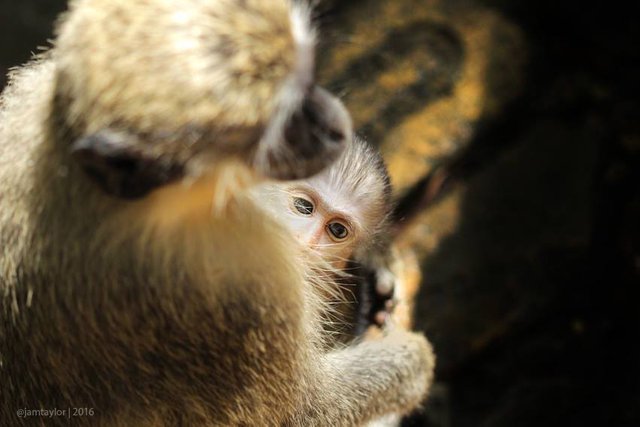
During the peak of production, "We never kept more than 500 [monkeys] at a time or for more than three months," said Baulu in an interview with Times Staff Writer, Carol Williams in 2004 . By then, more than 2,000 of these small monkeys remained housed in the Research Centre. Sitting in 3 foot high cages, stacked row after row, with not much more than the random toy or mirror to entertain them.
Scientists more or less agree that these inmates will never be able to be released. Without a troupe, they would be attacked by their free counterparts and would be unlikely to survive.
With a lifespan of around 30 years, the future of these animals seemed uncertain.
Baulu had hopes of finding new markets for research for this 'homeless' disease free population. Over 10 years have passed since then, and I can only guess how many monkeys remain in those cages.
It's a sad thought, to be sure.
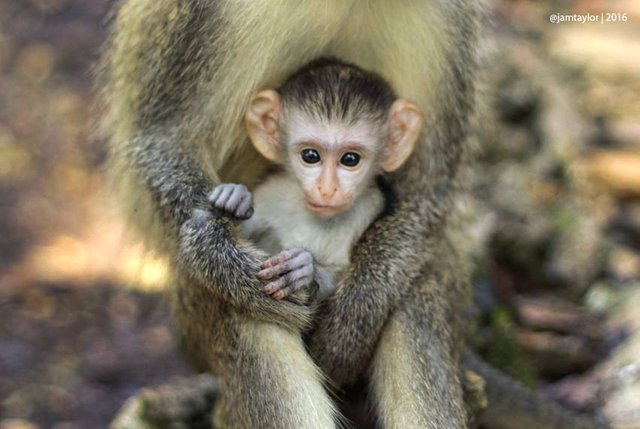
We share so much in common with these animals.
Kindergarten playgrounds come to mind as juveniles chase each other, tumbling and frolicking in the grass under the watchful eye of the Male leader of the troupe. Mother monkeys with their nursing young clinging closely to their hearts reminds me of my own special connection with my child. My sweet baby who just a few week ago, received a vaccination protecting her from the disease that could have crippled my Grandmother
These monkeys trapped in metal cages, saved us from our Iron Lungs.
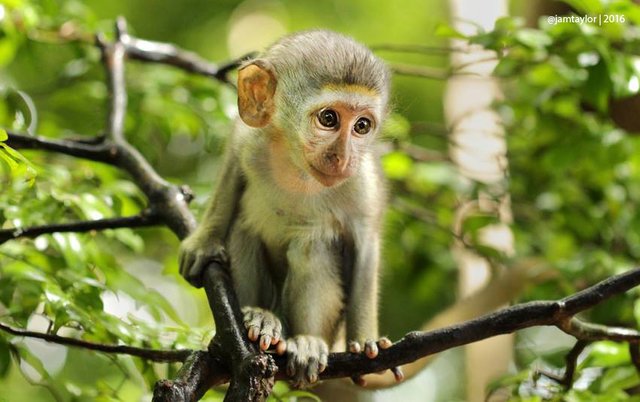
PS
One thing is for certain - the wild population of Barbados Green Monkeys seems at no risk despite their ongoing feud with farmers and kitchen-gardeners alike. In 1980 their population was estimated to be about 5,000 growing to over 14,000 by 2004. And if the view out my office window on an afternoon is any indication, their numbers remain steady.
Further Information & Sources:
http://www.who.int/mediacentre/factsheets/fs114/en/
https://en.wikipedia.org/wiki/Poliomyelitis#History
http://www.faqs.org/childhood/Pa-Re/Polio.html
http://abajantourgirlexploringbarbados.blogspot.com/2010/09/barbados-wildlife-reserve.html
http://articles.latimes.com/2004/dec/05/world/fg-monkeys5
Researched and written by @tiffjane

This post was inspired by a recent trip to the reserve with @jamtaylor to take photographs of the monkeys you see throughout the post. I vaguely knew there was a link between these monkeys and the polio vaccine but the more I researched the more interesting it all became.
Hope you find the same to be true!
I think it's safe to say that most people alive today don't have a clue how good we have it. There are so many diseases that have been put under the thumb of vaccines that we don't have any real-world experience with what it was like back then. We take a lot of it for granted. So much so, in fact, that people have begun believing untruths about vaccines in general.
As one who has a child with autism, I can't tell you what a slap in the face it is when someone tries to tell me my son's autism was caused by the vaccines that were given to him. Of course [sigh], that goes down a whole other road of conversation that would be best omitted for now.
By the way, @jamtaylor , I have no idea why I wasn't following you before now. Problem fixed. ;-)
It is so often the case in science that the suffering of a few is linked to the salvation of many.
This gives me mixed feelings. I support medical research but as an animal lover I am deeply uncomfortable with animal research too even if it does help with conservation.
I think many people experience the same mixed feelings.
I think we need to find a way to help with conservation as well as alternative research methods.
Yeah I feel the same way too, but as a parent my child is more important to me than thousands of monkeys. Maybe that isn't rational, but it is how I feel. Especially knowing that over a million deaths were prevented because of the research.
My house, built in the 1950s in a returning GI neighborhood, still has a ramp to support the post-polio patient who lived here for so long. He died of an infection soon after they moved out.
The same neighborhood used to have a public pool, which closed during the polio scare of the 1950s, because apparently it was mostly a water-borne virus.
I came across the pool thing in my research. I didn't dig into it but it seems like the paranoia about pools was unfounded because by then they were treating pools with Chlorine which kills the virus. (but like I said I didn't look into it deeply)
People were just so frightened of catching it that they became really cautious!
Yeah, I only moved here 10 years ago, so I wasn't around for that. I just found some of the leftover concrete in the neighborhood park where they had torn it down.
These are facination photoes and an article filled with interesting information
Its amazing howthings were in the 1920. Hope they never returnIts amazing and I qoute
"Eighty percent of the world's polio vaccine came from these Barbadian Green Monkeys."
They are amazing creatures, though I dont want them harmed, hopefull they keep them very comfortable and with a quality of life. They do help us, but hope we help them too
What a fascinating read! Thank you for the article and for the beautiful photography! Great stuff.
Wow that is fascinating. What a strange relationship to have with a close cousin. , makes me feel real strange.
Nice posting
Wonderful post!! Thanks for sharing it. I quite liked the presentation too! :)